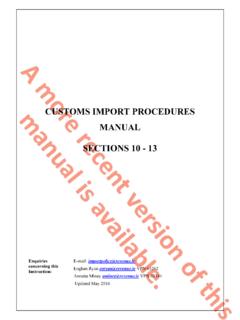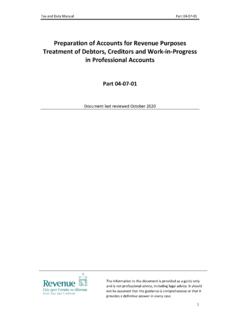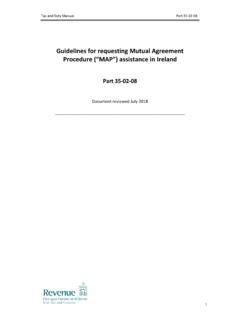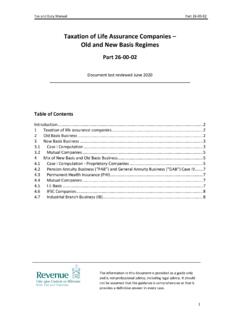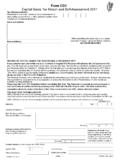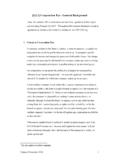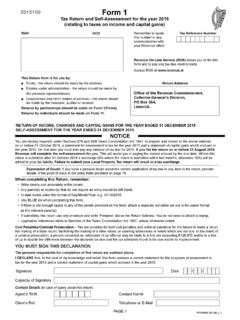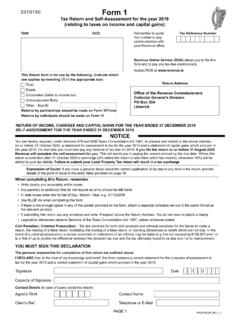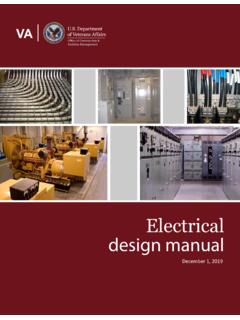Transcription of Part 18-02-01 - Relevant Contracts Tax - Revenue
1 Tax and Duty Manual Part 18-02-01 The information in this document is provided as a guide only and is not professional advice, including legal advice. It should not be assumed that the guidance is comprehensive or that it provides a definitive answer in every Contracts Tax: Relevant OperationsPart 18-02-01 This document should be read in conjunction with section 530 of the Taxes Consolidation Act 1997 Document last reviewed March 2021_____Tax and Duty Manual Part 18-02-012 Table of Features of the RCT are Relevant operations?
2 construction Forestry Meat processing Operations carried out in the and Duty Manual Part The purpose of this manual is to provide an overview of Relevant Contracts Tax (RCT) and to outline the type of activities that come within RCT. RCT applies to payments made by a principal contractor to a subcontractor under a Relevant contract a contract for the carrying out of, or the supply of labour for the carrying out of, Relevant operations in the construction , meat processing and forestry industries.
3 Since 2012 RCT operates as an electronic system and all interaction between the principal contractor and Revenue is through Revenue s Online Service (ROS). It is important to note that RCT applies only where the Relevant operations are performed under a Relevant contract with a principal who is obliged to operate RCT as set out in the RCT legislation. For example, if a private householder engages a builder to build an extension this is technically a Relevant contract. The builder is working as a contractor for the householder and carrying out a Relevant operation in the construction industry.
4 However, because the householder is not a principal to whom RCT applies, as set out in section 530A Taxes Consolidation Act, 1997, RCT does not apply to any payments made to the builder. However, where that builder in turn engages subcontractors to carry out some of the work, the builder would be obliged to operate RCT on payments to those subcontractors. Features of the RCT System The key features of the RCT system are:Contract Notification: The principal contractor must submit to Revenue details of each individual Relevant contract entered into.
5 Before notifying Revenue of the contract, the principal contractor must be satisfied as to the identity of the Notification: The principal contractor must notify Revenue of all Relevant payments before they are made. The gross payment (VAT exclusive amount if the VAT reverse charge applies) is advised to Revenue . A contract notification must be submitted to Revenue before any Relevant payments under that contract can be notified to Authorisation: Revenue will respond to the payment notification with a deduction authorisation setting out the rate of tax to be applied to the payment and how much tax, if any, must be withheld from the payment.
6 The rates of tax are set at zero, 20% or 35%. If tax is to be deducted, the principal contractor must provide a copy, or details, of the deduction authorisation to the subcontractor. If payments are made to subcontractors without a deduction authorisation, penalties Summary/Return: At the end of the return period, a deduction summary is made available by Revenue to the principal contractor detailing all the payments notified to Revenue during the return period. The principal contractor must check Tax and Duty Manual Part 18-02-014the deduction summary for accuracy and amend or add to it details of payments, if necessary.
7 Otherwise the deduction summary is deemed to be the return on the return filing date. Payment of RCT due: The principal contractor must pay any RCT deducted before the due date which is the 23rd of the month following the end of the return period (monthly or quarterly), if paying electronically and the 14th of the month following the end of the return period if paying by other are Relevant operations? Relevant operations are defined in section 530 Taxes Consolidation Act, 1997 and mean construction operations, forestry operations or meat processing operations.
8 construction operationsConstruction operations mean operations of any of the following descriptions:(a)the construction , alteration, repair, extension, demolition or dismantling of buildings or structures This definition includes the erection of structures such as gates, traffic lights, road signs, parking meters and garden sheds. It also includes the repair of such structures and the repair of any part of a building or of any system that has become a part of the fabric of the building. It does not include routine maintenance Contracts .
9 Contracts for repair work or for repair and maintenance would be included but not Contracts for maintenance only. Repair includes the replacement of constituent parts the repair of a window by installing a new pane of glass or the repair of a tiled floor by replacing one or two broken tiles. This definition also includes works to alter a building or structure painting walls, replacing doors, windows or kitchen presses but the alteration must be material to bring the work within the definition.
10 Minor changes such as painting one wall or replacing one door in a building would not be considered sufficient.(b)the construction , alteration, repair, extension or demolition of any works forming, or to form, part of the land, including walls, road works, power lines, telecommunication apparatus, aircraft runways, docks and harbours, railways, inland waterways, pipelines, reservoirs, water mains, wells, sewers, industrial plant and installations for purposes of land drainageThis definition includes work relating to telecommunication apparatus, but this only extends to masts, underground cabling.

